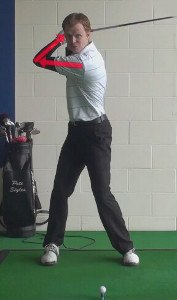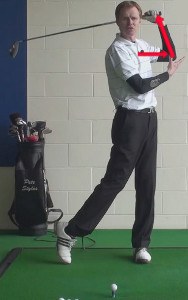
Is a bent left arm like Calvin Peete a good move to have in golf? How straight did Calvin Peete drive the golf ball? So straight he led the PGA Tour in driving accuracy for 10 consecutive years, hitting more than 80 percent of fairways from 1981-90. So straight that he hit the ball out of bounds exactly once in 26 pro seasons.
Peete’s tee shots were a lot straighter than his left arm, that’s for sure.
Peete was one of the top players of his era – he won 12 times, including the Players Championship in 1985 — despite a left arm left permanently bent by a childhood tree-climbing accident. What’s more, he didn’t take up the game until age 23.
No doubt, Peete’s story is one of the most amazing in golf history.
Unconventional move: Peete’s left arm is severely bent both at address and throughout the swing.
Who else does it: Curtis Strange, Ed Furgol

Keep your left arm straight? Calvin Peete couldn’t do it if he tried. He broke one of golf’s supposed cardinal rules on every swing, with his left arm angled sharply at setup, on the takeaway, at the top of the backswing and at impact. Peete only attained a conventionally correct position on the through-swing, when his left arm – like every golfer’s — bent naturally into the finish.
Why it’s a problem for amateurs: There’s a perfectly good reason
“keep your left arm straight” is a staple of the golf-instruction lexicon. If a golfer allows the left arm to buckle at the top of the swing – quite common among beginners – the entire operation becomes disconnected. This essentially adds another moving part, making it that much more difficult to return the clubface to a square position at impact. Ironically, bending the left arm in an effort to make a longer, more powerful swing can actually rob you of distance.
How Peete got away with it: If you think about it, Peete’s left arm was effectively “straight” throughout his swing. It was in the same position at address and impact, and that’s what really matters. Had Peete allowed the arm to go limp at the top, he’d have suffered the same issues as anyone else.
Indeed, some observers believe Peete’s left arm ailment may have aided his consistency. With the arm locked in place, no breakdowns could occur.

The cure: Golfers whose left arm bends abruptly are usually guilty of stopping the shoulders too early in the backswing. When the shoulders freeze, the arm keeps moving, then breaks at the elbow as the player seeks to lengthen the swing.
There’s a simple way to fix this: When the shoulders stop moving, the arms should too.
Of course, that begs the question: When should the shoulders stop rotating? On a full swing with the driver, achieving a 90° angle between the shoulders and target line is considered ideal. Put another way, your back should directly face the target (i.e. the green). If the shoulders and arms are working in unison, the left arm will be across your chest (but not touching it) as you complete the turn.
One final note: Don’t attempt to keep the left arm straight by tensing up. Rigidity will restrict your motion and defeat the purpose.






